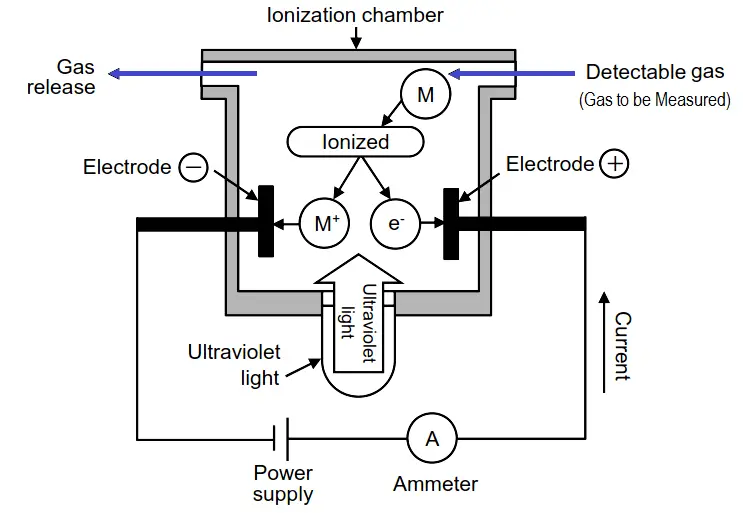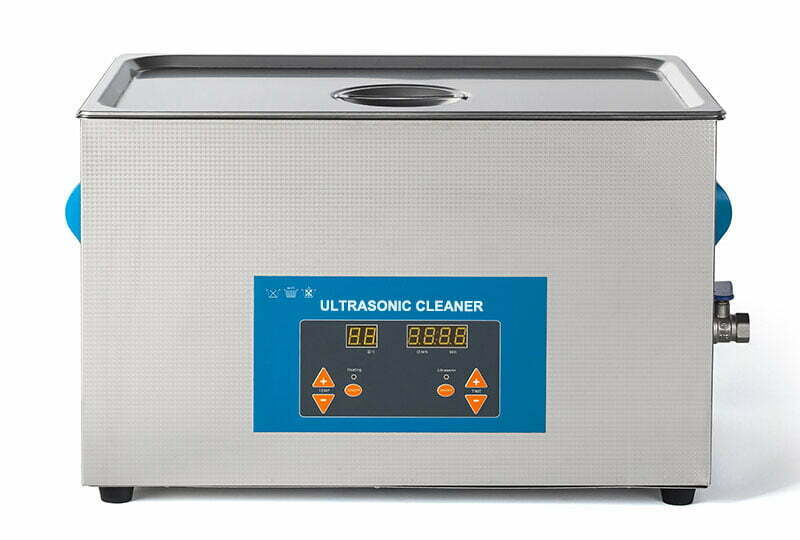The volatile organic compound sensor measures the amount of VOCs in a space. It is an important tool for indoor air quality (IAQ) monitoring because it identifies contaminants that pose a risk to human health. As an example, the VOC sensor alerts you when there’s too much natural gas in the building. Why? Natural gas is made up of mostly methane, and it’s highly combustible. An excess concentration of natural gas can set off a spark or cause an explosion if combined with other flammable gases or vapors. The volatile organic compounds monitor is one of the most important sensors in your IAQ monitoring arsenal because many indoor air contaminants are organic compounds. These include formaldehyde, benzene, and trichloroethylene — chemicals that are also hazardous to our health. A VOC sensor can pinpoint if there’s a leak in your water supply or if someone has been using paint thinner or another solvent in the break room again! Keep reading to learn more about why this sensor is essential to ensuring a healthy indoor environment!
What are VOCs and VOC Sensors?
VOC
Volatile organic compounds (VOCs) are chemical substances that have a high vapor pressure at room temperature and are released into the atmosphere. These compounds are commonly found in a variety of consumer products, fuels, and industrial processes. Examples of VOCs include benzene, toluene, ethylene, formaldehyde, and xylene. VOCs can have a range of negative impacts on human health and the environment, including respiratory irritation, headaches, and eye and nose irritation. They can also contribute to the formation of ground-level ozone, which is a major component of smog. In addition, some VOCs can accumulate in the environment and have the potential to cause long-term health effects.
VOC Sensors
VOC sensors are devices used to detect and measure the concentration of VOCs in the air. These sensors work by using a sensitive chemical element or lectronic components to detect the presence of VOCs. When VOCs are present in the air, they react with the chemicals present in the sensor and generate an electrical charge. This charge is then measured by the sensor and the concentration of VOCs can be determined.
VOC Sensor Applications
• Automotive emissions monitoring: VOC sensors are used in the automotive industry to monitor and measure the amount of dangerous pollutants released into the atmosphere. This helps to ensure that cars are compliant with emissions regulations.
• Indoor air quality monitoring: VOC sensors can be used to monitor indoor air quality in hospitals, schools, and other public buildings. This helps to ensure that air inside the building is safe and free of harmful pollutants.
• Industrial process monitoring: VOC sensors are used to monitor industrial processes such as fermentation and distillation. This ensures that the process is running efficiently and safely.
• Environmental monitoring: VOC sensors can be used to monitor the environment, such as in water and soil samples, to detect the presence of pollutants or other contaminants. This helps to ensure that the environment is safe and healthy.
How do VOC Sensors Work?
VOC sensors typically use one of two different types of technology to measure the presence of VOCs: photoionization detectors (PIDs) or metal oxide semiconductor (MOS) sensors.
Photoionization Detectors (PIDs)
Photoionization detectors measure the concentration of VOCs by ionizing the molecules of the VOCs with a UV light. The ions created from the UV light then pass through a chamber where they are detected and measured by an electrostatic field. The measured ions are converted into a measureable electrical current and then sent to a read-out device for further analysis.

MOS Sensors
Metal oxide semiconductor (MOS) sensors work by using a metal oxide film that is sensitive to VOCs. When a VOC comes into contact with the metal oxide film, it causes a change in the electrical properties of the film which is then measured by the sensor. The electrical signal from the sensor is then sent to a read-out device for further analysis.

Both PIDs and MOS sensors are used in a variety of applications such as indoor air quality monitoring, emissions monitoring, process control, and environmental monitoring. They can be used to detect a variety of VOCs such as formaldehyde, toluene, benzene, xylene, and more.
Types of VOC Sensors
There are three main types of common VOC gas sensors based on their working principles:
- Electrochemical VOC sensors: such as those based on resistance, current, impedance, and potential.
- Optical VOC sensors: including spectral absorption, fluorescence, and visualization.
- Mass VOC sensors: such as quartz crystal microbalances and surface acoustic wave gas sensors.
Electrochemical VOC sensor
The detection principle of an electrochemical VOC sensor involves the adsorption or reaction (physical or chemical) of VOC gases on the surface of a gas-sensitive material, which results in changes in its electrical properties such as resistance, current, impedance, and potential.
Among them, the most widely used type of VOC sensor based on semiconductor metal oxides is the conductive type, which plays an important role in the current gas sensing field. According to their electrical detection devices for gases, they can be divided into common two-electrode conductive detection systems and three-electrode field-effect transistor detection systems. Based on the VOC gas-sensitive materials, they can be categorized as semiconductor metal oxides, conductive polymers, nanomaterials (such as zero-dimensional gold nanoclusters, one-dimensional carbon nanotubes or silicon nanowires, and multidimensional graphene), and porous materials.
Semiconductor metal oxide conductivity sensor
Semiconductor metal oxide gas sensors detect gases by utilizing the property that the resistance or work function of a semiconductor changes when it comes into contact with a gas. Semiconductor sensors are among the earliest and most mature gas sensors.
As early as 1936, it was discovered that Cu20’s conductivity changes when it adsorbs water vapor. Today, semiconductor gas sensors have developed into a large system due to their advantages of simple structure, fast response, low cost, stability, and simple circuits, among which research on ZnO and SnO2 is the most mature.
However, the shortcomings of semiconductor metal oxide gas sensors are that they work at relatively high temperatures, have poor gas selectivity, and are prone to poisoning. Therefore, some new types of sensors, such as metal-organic composites and heavy metal-doped semiconductor gas sensors, have been developed and applied.
Zero-dimensional nanomaterial conductivity sensor
As is well-known, nanostructures are very sensitive to chemical environments and can be used as gas sensing materials with ultra-high sensitivity. Zero-dimensional gold nanoclusters have attracted widespread attention in the field of sensing due to their unique physical and chemical properties.
Gold nanoclusters not only exhibit quantum dot behavior of zero-dimensional metal cores, but also exhibit surface interactions with ligands. The inner gold core provides a conductive channel for electrons, while the outer organic shell acts as an insulating layer, providing a selective adsorption interface for volatile organic compounds (VOCs). Adsorption of VOCs causes the monolayer gold nanoclusters to expand, increasing the distance between the gold cores, thereby leading to a decrease in conductivity and an increase in resistance. Monolayer gold nanoclusters are typically deposited onto integrated electrodes using spray coating.
The electrical response characteristics of monolayer gold nanoclusters to VOCs are not only related to changes in the electronic conductivity between the gold cores caused by adsorption of VOCs, but also related to activation energy. Activation energy relates to the charging process between gold nanoclusters and is closely related to the dielectric constant of the VOC. Based on the interaction forces between different functionalized gold nanoclusters and VOCs, organic thiol types and structures are designed and selected, such as van der Waals force (alkylthiol), polarization induction force (dimethyl phthalate), polarity (methoxy), and hydrogen bonding (benzothiazole). A VOC sensing array is constructed based on the cross-selective response characteristics of different gold nanoclusters to VOCs.
Conductivity gas sensors based on nanoporous materials
This section discusses the use of nano-porous materials, specifically nano-porous silicon photonic crystals, as gas sensor materials due to their high surface area and gas adsorption capabilities. The unique optical and electrical properties of nano-porous silicon make it a promising material for VOC gas sensing applications.
Conductivity sensors based on polymer materials
Conductive polymer materials are commonly used in gas sensors due to their electrical and optical properties, mechanical flexibility, and electrochemical redox characteristics. This section focuses on the use of conjugated polymer materials such as phthalocyanine polymers, polypyrrole, polyaniline, and porphyrins and metalloporphyrin complexes as gas sensor materials. While the interaction between most VOCs and conductive polymer materials is weak, the use of principal component analysis allows for the identification and differentiation of VOCs based on their physical interaction with the material.
Optical VOC sensors
Gas sensors based on optical signals have the advantages of strong anti-electromagnetic interference, fast response, and easy implementation for online monitoring of organic gases.
There are various types of optical sensors based on their working principles, including reflective interference method, ultraviolet-visible absorption photometry, colorimetric method, fluorescence method, surface plasmon resonance method, and fiber optic sensing technology. Optical gas-sensitive materials include traditional porphyrins and metalloporphyrins, fluorescent dye molecules, pH indicators, and new types of biomimetic photonic crystals.
Sensors based on the principle of optical absorption
Spectroscopic absorption gas sensors detect VOCs based on the intensity or displacement change of the absorption spectrum of gas-sensitive materials after adsorbing VOCs. Common gas-sensitive materials include pH indicators, solvatochromic dyes, and metalloporphyrins.
Color-based Visual VOC Sensor
The visual gas sensor is a novel optical sensing technology and an important trend in sensor technology development. It represents the characteristic information of smells in the form of images, also known as visual olfaction.
Compared to traditional electrochemical and fluorescence sensing signals, the colorimetric output signal mode is the most straightforward sensing platform for developing naked-eye detection technology, minimizing the need for signal conversion equipment modules. It can provide on-site practical detection for non-technical personnel or end-users. Currently reported sensing materials for VOC visualization include polydiacetylene paper chips, methylene yellow 6 nanofibers, Fabry-Perot interference micro-porous polymers, and supramolecular host-guest complexes.
The detection system uses a CMOS image sensor to collect the image information of spectral changes of the visual sensor before and after reacting with the measured gas. Through processes such as image preprocessing, feature extraction, and reference matching, it achieves the identification of gas concentration and species. Porphyrin and metalloporphyrin gas-sensitive materials have greatly promoted the development of visual VOC sensors.
VOC Sensor Based on Optical Interference Principle
Photonic crystals (PCs) are dielectric materials with periodic variations in refractive index in space, and their periodicity is on the same order of magnitude as the wavelength of light. The main feature of PCs is the presence of a photonic bandgap (PBG) in its band structure, which consists of a photonic conduction band and a photonic valence band, a periodic artificial microstructure with PBG characteristics.
When electrons in a semiconductor material propagate in a periodic potential field of a lattice, band structures are formed due to Bragg scattering, and band gaps appear between the bands. If the energy of the electron wave falls into the band gap, the propagation is prohibited.
Similarly to the modulation of the electron wave function in a semiconductor lattice, the refractive index of light in photonic crystals varies periodically, and the band gap structure of light appears when electromagnetic waves propagate in it. The light waves in the photonic bandgap are prohibited from propagating. In principle, control of the movement of photons can be achieved by designing and manufacturing photonic crystals and their devices, which have important implications for the development of various optical devices, optical fiber communication, and photonic computers. In short, photonic crystals have the function of filtering, selectively allowing certain bands of light to pass through and blocking other wavelengths of light.
Fluorescence VOC sensors
VOC sensors that are based on the principle of fluorescence emission are significant advancements in analytical chemistry. These sensors possess characteristics such as high sensitivity, good selectivity, and strong resistance to electromagnetic interference. However, these sensors often face challenges such as difficult labeling and poor repeatability. The structure, stereochemistry, and fluorescence efficiency of fluorescent molecules can be affected by external factors such as humidity, polarity, and pH, which in turn can affect the shape and intensity of their fluorescence spectra.
SPR VOC Sensors
SPR (surface plasmon resonance) is a physical optical phenomenon of the evanescent field. It occurs when light undergoes total internal reflection at the interface between glass and a metal film, creating an evanescent wave that can induce surface plasmon waves on the metal surface by generating free electrons.
Under certain conditions of incident angle or wavelength, the frequency and wave number of the surface plasmon wave and the evanescent wave resonate, and the incident light is absorbed, resulting in a resonance peak in the reflection spectrum. Gas adsorption on the metal film surface changes its thickness or refractive index, thus altering its resonance peak (resonance angle or resonance wavelength). SPR technology is a new gas detection method with the advantages of simple structure, high sensitivity, and wide detection range.
Cutting-edge Science Research about VOC Sensor
A recent study published in Science Advances reports the development of a highly sensitive volatile organic compound (VOC) sensor based on olfactory receptors reconstituted into a lipid bilayer and used in a specifically designed gas flow system for rapid parts per billion (ppb)–level detection. The study demonstrates the potential for using biological odorant sensing in breath diagnosis systems and environmental monitoring. Olfactory receptors in living organisms can recognize various VOCs with a level of detection corresponding to a single molecule, making them far superior in selectivity and sensitivity compared with current VOC sensors using artificial materials. The study overcomes the challenges of low solubility of VOCs by developing a gas flow system that efficiently introduces VOCs into aqueous droplets and enhances the detection probability of an array of lipid bilayers. As a practical example, the study demonstrates the detection of 1-octen-3-ol (octenol) at the parts per billion (ppb) level, which is a biomarker in human breath, by using a VOC sensor consisting of olfactory receptors reconstituted in a lipid bilayer. (here to learn more about the details of this VOC sensor research)

The article explains that VOC (volatile organic compound) sensors work by detecting changes in electrical conductivity when VOC molecules bind to the sensor’s surface. The sensors are made up of a thin film of a conducting polymer, which is coated with a layer of a material that absorbs specific VOCs. When VOCs bind to the absorber layer, they change the electrical conductivity of the conducting polymer film, which can be measured and used to detect the presence and concentration of the VOC. The article also describes some recent advances in VOC sensor technology, including the use of machine learning algorithms to improve sensor accuracy and the development of flexible, wearable sensors.
How to Measure VOCs?
Finding the source of VOCs with a VOC sensor
There are a few steps you can take to find the source of VOCs with a VOC sensor. First, you should take a look at your indoor air quality monitor readings. If the VOC levels are high, then you should investigate the problem areas. You can also use a VOC sensor to get a sample of the air in a particular area of the building. You would then take the sample back to your sensor to get a more precise reading. The sensor would then indicate if there was a problem in the area where you took the sample. The sensor would also indicate the type of problem if the analyzer could detect it.
Identifying problematic gases using the Right-to-Know Rule
The Right-to-Know Rule is a regulation that requires commercial VOC sensors to detect a certain set of VOCs. These include acetone, benzene, carbon tetrachloride, formaldehyde, hydrogen sulfide, and trichloroethylene. The Right-to-Know Rule also applies to other IAQ sensors. For example, carbon dioxide sensors must detect CO2 levels above 19 ppm. Nitrogen dioxide sensors must detect NO2 levels above 0.5 ppm. Temperature and relative humidity sensors must detect a temperature above 35 degrees Fahrenheit or relative humidity above 45 percent.
Detecting leaks using the VOC Sensor
You can use a VOC sensor to detect leaks in the system. You would need to set up your sensor so that it is looking for a specific gas. If a leak is present, the sensor would indicate that this particular gas is either higher or lower than it should be. You have to be careful, though! You have to be sure that you are not getting false readings due to the presence of the gas in the atmosphere. If you are monitoring for natural gas, for example, you will also get a reading from carbon dioxide. You can get around this problem by taking multiple samples from different places in the building.
Conclusion
The VOC sensor is an important tool for indoor air quality (IAQ) monitoring because it identifies contaminants that pose a risk to human health. VOC sensors can help you find the source of the contaminants, identify problematic gases, and detect leaks in the system. If you find a leak or recognize a problem, you should take steps to correct the situation as soon as possible.






